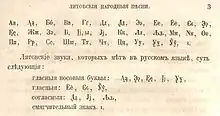| Cyrillic letter U with ring above | |||||||||||||||||||||||||||||||||||||||||||||||||||||||||||||||||||||||||||||||||||||||||||||||||||||||||||||||||||||||||||||||||||||||||||||||||||||||||||||||||||||||||||||||||||||||||||||||||||||||||||||||||
|---|---|---|---|---|---|---|---|---|---|---|---|---|---|---|---|---|---|---|---|---|---|---|---|---|---|---|---|---|---|---|---|---|---|---|---|---|---|---|---|---|---|---|---|---|---|---|---|---|---|---|---|---|---|---|---|---|---|---|---|---|---|---|---|---|---|---|---|---|---|---|---|---|---|---|---|---|---|---|---|---|---|---|---|---|---|---|---|---|---|---|---|---|---|---|---|---|---|---|---|---|---|---|---|---|---|---|---|---|---|---|---|---|---|---|---|---|---|---|---|---|---|---|---|---|---|---|---|---|---|---|---|---|---|---|---|---|---|---|---|---|---|---|---|---|---|---|---|---|---|---|---|---|---|---|---|---|---|---|---|---|---|---|---|---|---|---|---|---|---|---|---|---|---|---|---|---|---|---|---|---|---|---|---|---|---|---|---|---|---|---|---|---|---|---|---|---|---|---|---|---|---|---|---|---|---|---|---|---|---|
| Phonetic usage: | /ɵ~ʊː/ | ||||||||||||||||||||||||||||||||||||||||||||||||||||||||||||||||||||||||||||||||||||||||||||||||||||||||||||||||||||||||||||||||||||||||||||||||||||||||||||||||||||||||||||||||||||||||||||||||||||||||||||||||
| The Cyrillic script | |||||||||||||||||||||||||||||||||||||||||||||||||||||||||||||||||||||||||||||||||||||||||||||||||||||||||||||||||||||||||||||||||||||||||||||||||||||||||||||||||||||||||||||||||||||||||||||||||||||||||||||||||
| Slavic letters | |||||||||||||||||||||||||||||||||||||||||||||||||||||||||||||||||||||||||||||||||||||||||||||||||||||||||||||||||||||||||||||||||||||||||||||||||||||||||||||||||||||||||||||||||||||||||||||||||||||||||||||||||
| |||||||||||||||||||||||||||||||||||||||||||||||||||||||||||||||||||||||||||||||||||||||||||||||||||||||||||||||||||||||||||||||||||||||||||||||||||||||||||||||||||||||||||||||||||||||||||||||||||||||||||||||||
| Non-Slavic letters | |||||||||||||||||||||||||||||||||||||||||||||||||||||||||||||||||||||||||||||||||||||||||||||||||||||||||||||||||||||||||||||||||||||||||||||||||||||||||||||||||||||||||||||||||||||||||||||||||||||||||||||||||
| |||||||||||||||||||||||||||||||||||||||||||||||||||||||||||||||||||||||||||||||||||||||||||||||||||||||||||||||||||||||||||||||||||||||||||||||||||||||||||||||||||||||||||||||||||||||||||||||||||||||||||||||||
| Archaic or unused letters | |||||||||||||||||||||||||||||||||||||||||||||||||||||||||||||||||||||||||||||||||||||||||||||||||||||||||||||||||||||||||||||||||||||||||||||||||||||||||||||||||||||||||||||||||||||||||||||||||||||||||||||||||
| |||||||||||||||||||||||||||||||||||||||||||||||||||||||||||||||||||||||||||||||||||||||||||||||||||||||||||||||||||||||||||||||||||||||||||||||||||||||||||||||||||||||||||||||||||||||||||||||||||||||||||||||||
U with ring above (У̊ у̊) is a letter of the Cyrillic script, used in the Shughni language and formerly in 19th-century Lithuanian Cyrillic.
Uses

The 1867 Lithuanian Cyrillic alphabet, with this letter
It is the 32nd letter of the Shughni alphabet between ӯ and Ф, representing /ɵ~ʊː/. Sometimes the digraph уо is used instead.[1]
U with ring above was also used in Lithuanian writing, notably in the orthography of Jonas Juška,[2] after the defeat in the January Uprising of 1863 and the following ban on Latin writing in official documents from 1864 to 1904.
Computing codes
This letter is not a precomposed character. It needs to be composed using U+0423 У CYRILLIC CAPITAL LETTER U+U+030A ◌̊ COMBINING RING ABOVE and U+0443 у CYRILLIC SMALL LETTER U+U+030A ◌̊ COMBINING RING ABOVE.
| Preview | У | у | ̊ | |||
|---|---|---|---|---|---|---|
| Unicode name | CYRILLIC CAPITAL LETTER U | CYRILLIC SMALL LETTER U | COMBINING RING ABOVE | |||
| Encodings | decimal | hex | dec | hex | dec | hex |
| Unicode | 1059 | U+0423 | 1091 | U+0443 | 778 | U+030A |
| UTF-8 | 208 163 | D0 A3 | 209 131 | D1 83 | 204 138 | CC 8A |
| Numeric character reference | У | У | у | у | ̊ | ̊ |
| Named character reference | У | у | ||||
References
- ↑ "Shugni language, alphabet and pronunciation". Omniglot. Retrieved 2023-03-12.
- ↑ Subačius, Giedrius (March 2008). "The Letter and Lithuanian Cyrillic Script: Two Language Planning Strategies in the Late Nineteenth Century". Journal of Baltic Studies. 39 (1): 73–82. doi:10.1080/01629770801908747. ISSN 0162-9778. S2CID 144055346.
This article is issued from Wikipedia. The text is licensed under Creative Commons - Attribution - Sharealike. Additional terms may apply for the media files.